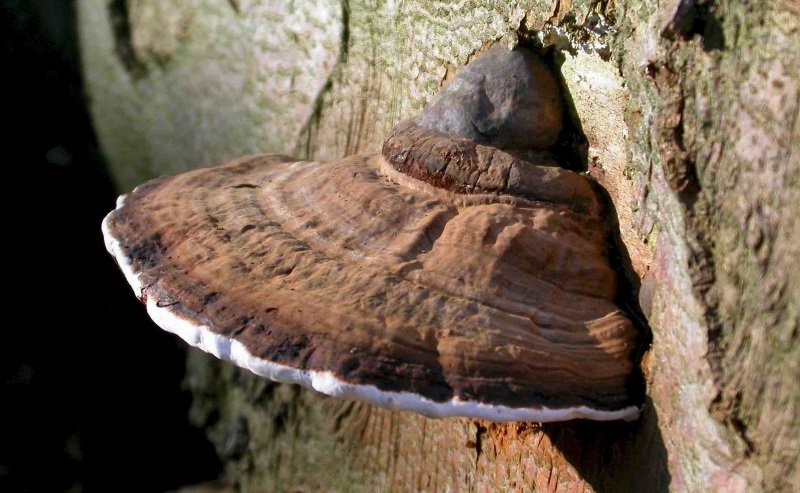Southern Ganoderma (Ganoderma australe)
- אָפּטייל: Basidiomycota (Basidiomycetes)
- סאַבדיוויזשאַן: Agaricomycotina (Agaricomycetes)
- קלאַס: Agaricomycetes (Agaricomycetes)
- סובקלאַס: Incertae sedis (פון ומזיכער שטעלע)
- סדר: פּאָליפּאָרעלעס (פּאָליפּאָרע)
- משפּחה: Ganodermataceae (Ganoderma)
- מין: גאַנאָדערמאַ (גאַנאָדערמאַ)
- טיפּ: Ganoderma australe (Southern Ganoderma)

Ganoderma southern refers to polypore fungi.
It usually grows in warm regions, but is also found in the zones of broad-leaved forests in the central regions of Our Country and in the North-West (Leningrad region).
Places of growth: deadwood, living deciduous trees. Prefers poplars, lindens, oaks.
Settlements of this fungus cause white rot on wood.
Fruiting bodies are represented by caps. They are perennial mushrooms. The caps are large (can reach up to 35-40 cm in diameter), up to 10-13 cm thick (especially in single basidiomas).
In shape, the caps are flat, slightly arched, sessile, with a wide side they can grow to the substrate. Groups of mushrooms can grow together with hats, forming numerous colonies-settlements.
The surface is even, with small grooves, often covered with spore pollen, which gives the cap a brownish tint. When dried, the fruiting bodies of southern Ganoderma become woody, numerous cracks appear on the surface of the caps.
The color is different: grayish, brown, dark amber, almost black. In dying mushrooms, the color of the caps becomes gray.
The hymenophore of southern Ganoderma, like most tinder fungi, is porous. The pores are rounded, triangular in some specimens, color: cream, grayish, in mature mushrooms – brown and dark amber. The tubes have a multilayer structure.
The pulp is soft, chocolate or dark red.
Ganoderma southern is an inedible mushroom.
A similar species is Ganoderma flatus (tinder fungus flat). But in the south, the size is larger and the cuticle is glossy (there are also very serious differences at the micro level – the length of the spores, the structure of the cuticle).









